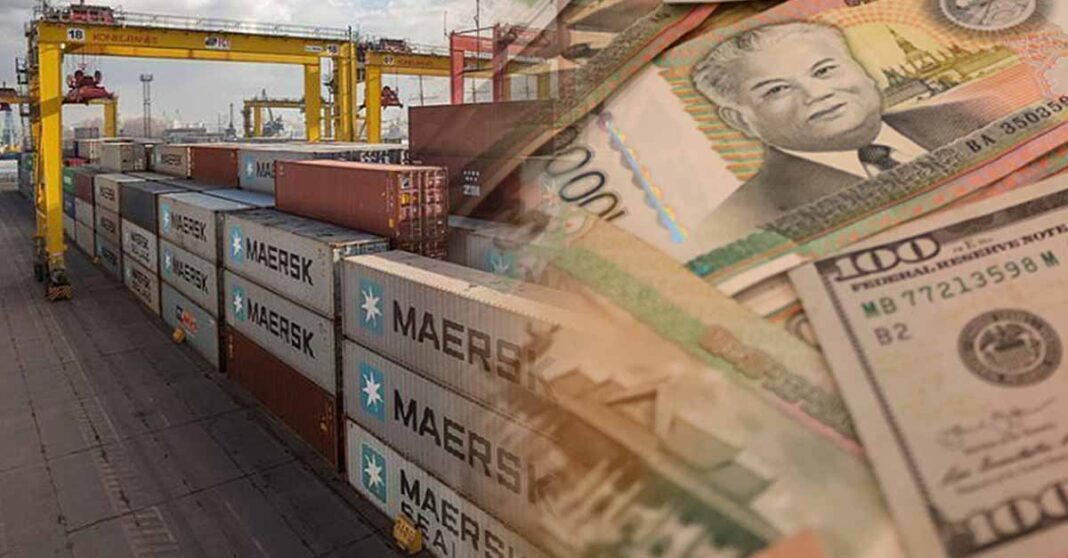Laos experienced four consecutive months of trade deficits from January to April this year. This situation has been exacerbated by rising inflation rates, leading to a record depreciation of the national currency, the Lao Kip.
In April, Laos recorded a two-way trade total of USD 1.122 billion, with exports amounting to USD 462 million and imports totaling USD 660 million. This marks a trade deficit of USD 198 million, the highest of the year and continuing a four-month streak of deficits for Laos. Data for May and June are yet to be released.
The latest statistics from the Lao government reveal that salt was the leading export, valued at USD 84 million, followed by mixed gold and bullion at USD 79 million, copper ore at USD 40 million, and cassava at USD 32 million. Other notable exports included sugar, bananas, rubber, cassava flour, and iron ore.
On the import side, diesel was the most imported item for Laos, valued at USD 96 million, followed by land vehicles at USD 56 million, mechanical equipment at USD 36 million, and steel and steel products at USD 29 million. Other top imports included plastic utensils, finished chemical products, gasoline, and spare parts.
Regarding trade partners, Vietnam emerged as the largest market for Lao exports, totaling USD 160 million, followed by Thailand at USD 107 million and China at USD 103 million. Laos also exported goods worth USD 43 million to Australia and USD 19 million to Switzerland.
On the import side, Thailand was the largest source of Lao imports, amounting to USD 336 million, followed by China at USD 213 million and Vietnam at USD 33 million. The United States and South Korea were also notable sources, with imports valued at USD 17 million and USD 12 million, respectively.
Despite facing a trade deficit, the Lao State Portal, as usual, states that the reported figure does not include the value of the electricity trade. This omission has had a profound impact on the country’s economy, contributing significantly to a persistently high inflation rate. In May, inflation in Laos soared to 25.8 percent, marking a 1 percent increase from April’s 24.9 percent.
Recently, Bounleua Sinxayvoravong, the Governor of the Bank of Laos, stated that inflation is expected to remain high through the end of this year, making it unlikely to achieve the government’s goal set in late 2023 of reducing the rate to 9 percent.
In the meantime, the Lao kip continues its downward trend, reaching a new record low against major currencies such as the Thai baht, the US dollar, and the Chinese yuan. As of 13 June, Lao commercial banks, including Banque Pour Le Commerce Exterieur Lao Public (BCEL Bank) and Phongsavanh Bank, are selling US dollars at LAK 21,825 and Thai baht at LAK 694.45. However, unofficial or “shadow” rates are significantly higher, exceeding LAK 25,000 for the US dollar and surpassing LAK 710 for the Thai baht, according to a local money exchange shop.
To tackle these pressing issues, the government has initiated the 7th National Assembly Session, scheduled to continue until early July. This session aims to address significant socioeconomic challenges such as inflation, corruption, education problems including teacher and labor shortages, and drug trafficking. Despite these efforts, many residents say that additional measures and more concrete actions are necessary to effectively combat these issues.



